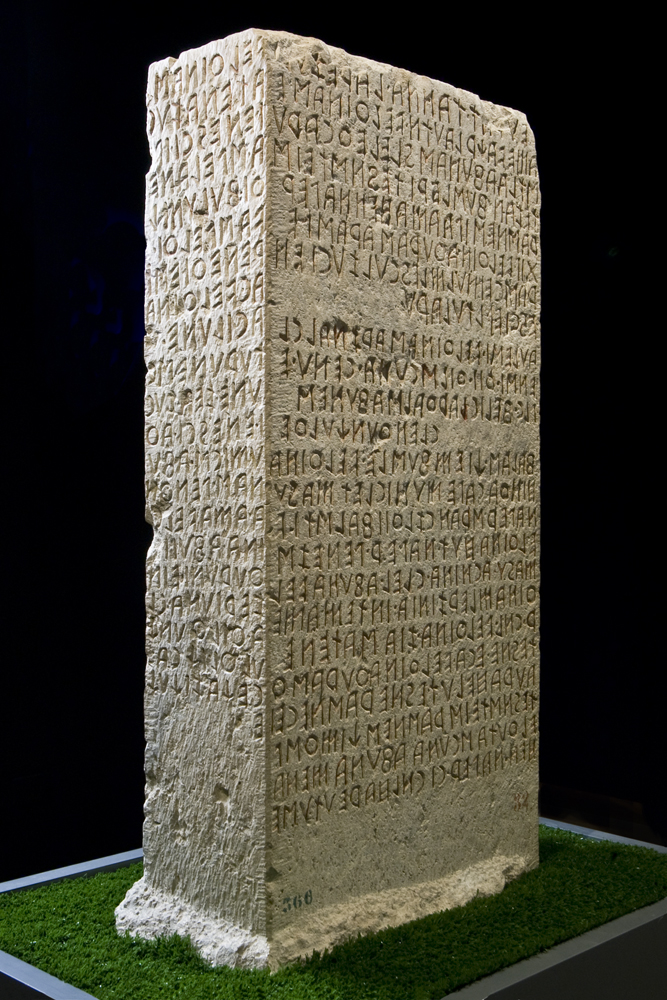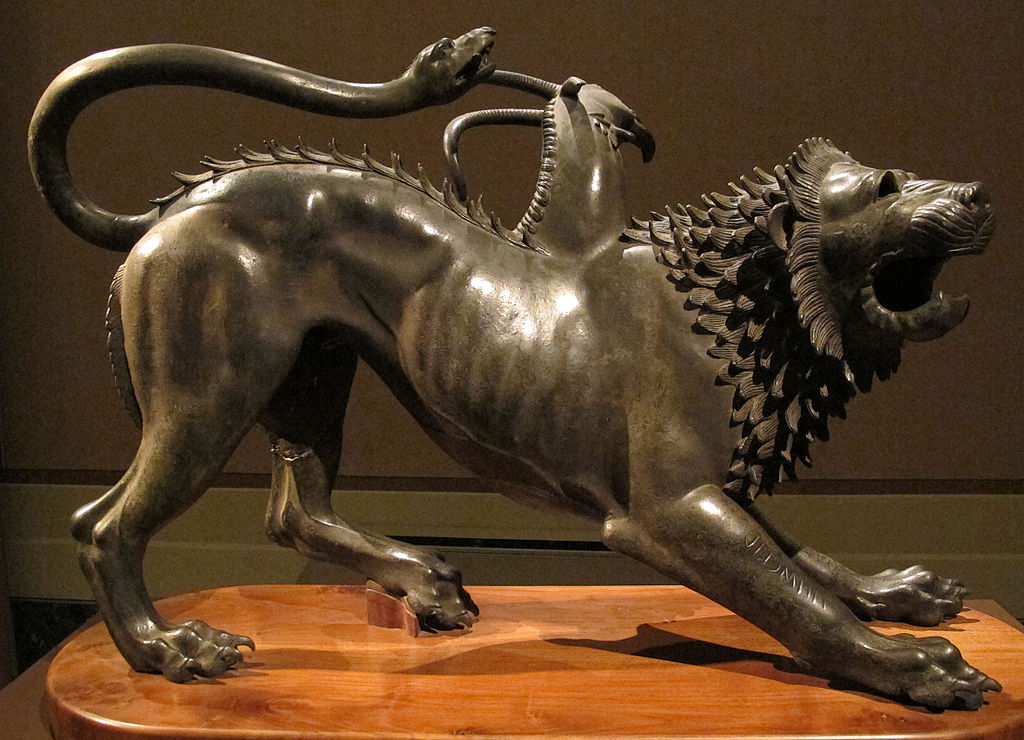Before the Romans expanded their territory to dominate the entire Mediterranean region, a large portion of Italy was inhabited by the Etruscans. At the height of their power, the Etruscans occupied a territory extending between the Po Valley and the Gulf of Naples, while their most important city states were located in Central Italy, between modern-day Tuscany, Umbria, and northern Lazio, in a historical region known as Etruria.
The origin of the Etruscan civilization has been a matter of debate for centuries. Now, most historians agree that the Etruscans developed from the Proto-Villanovian culture, which in turn branched off from the Urnfield culture of Central Europe. The autochthonous origin of the Etruscans seems to be confirmed by modern analysis of ancient DNA. Meanwhile, the Etruscan language is regarded as a Pre-Indo-European language, closely related to the Raetic language spoken in the Alps and the Lemnian language from the Greek island of Lemnos.
On that note, the Etruscans called themselves Rasenna, later shortened to Rasna or Raśna, while the Greeks called them Tyrrhenians (Tyrrhēnoi). The Romans instead called them Tuscī or Etruscī, and their modern name comes from here.
The Cippus Perusinus, a stone tablet with inscriptions in the Etruscan language discovered near Perugia and conserved in the National Archaeological Museum of Umbria in Perugia (SBAUmbria, Wikimedia Commons, CC BY-SA 3.0).
The oldest phase of the Etruscan civilization is the Villanovian culture, dating between 900 BCE and 720 BCE. During this period, various settlements were established throughout Italy, most notably in Etruria and Emilia-Romagna, but also further south in Campania.
In the 8th century BCE, the Etruscans came into contact with Greek settlers in Southern Italy, and started assimilating many characteristics of the ancient Greek civilization. During the so-called Orientalizing period (720 BCE-580 BCE), the Etruscan society became more aristocratic and adopted an alphabet similar to the one used by the Greeks. The Etruscan civilization flourished thanks to the commerce of copper, iron, and other metals that they exported in all of Europe, and they expanded their influence in the Italian peninsula and the Western Mediterranean during the Archaic period (580 BCE-480 BCE).
The expansion of the Etruscans led to a conflict with Greek settlers, especially in Corsica. The Etruscans allied themselved with Carthage, and fought the Greeks in the Battle of Alalia in 540 BCE, a naval battle that took place off the eastern coast of Corsica. The Greeks won the battle, but lost most of their fleet and had to evacuate the island. Corsica was then occupied by the Etruscans, while Carthage retained its control over Sardinia.
The Sarcophagus of the Spouses, an Etruscan sarcophagus dating from the 6th century BCE found in the Necropolis of the Banditaccia in Cerveteri and now located in the National Etruscan Museum of Villa Giulia in Rome (Sailko, Wikimedia Commons, CC BY-SA 4.0).
Meanwhile, the Etruscans expanded their rule in the Italian peninsula, taking large territories both to the north in the Po Valley, and to the south in Lazio and Campania, along the coast of the Tyrrhenian Sea. During this time, the Etruscans heavily influenced the development of Rome, then a tiny village inhabited by the Latins. The city was ruled by three Etruscan kings between 616 BCE and 509 BCE, before the monarchy was abolished and the Roman Republic was founded.
Around the sixth century BCE, the twelve most powerful Etruscan city states formed an alliance now known as the Etruscan League or Dodecapolis (“Twelve Cities” in Greek). It is not entirely clear which cities were part of this alliance, but the most likely candidates are: Arretium (Arezzo), Caisra (Cerveteri), Clevsin (Chiusi), Curtun (Cortona), Felathri (Volterra), Fufluna (or Pupluna) (Populonia), Perusna (or Perusia) (Perugia), Tarchna (Tarquinia), Veii, Velch (Vulci), Velzna (or Volsinii, which could be modern-day Orvieto or Bolsena), and Vetluna (Vetulonia). Other important Etruscan cities were associated with the alliance, like Rusel (Rusellae), while two other leagues were founded, one in the south led by Capeva (or Campeva) (Capua), and one in the north which included Atria (Adria), Felsina (Bologna), Kainua (Marzabotto), and Spina (near modern-day Comacchio).
Map of the main Etruscan cities and the areas inhabited by the Etruscans (NormanEinstein, Wikimedia Commons, CC BY-SA 3.0).
Various conflicts with Rome in Lazio and with the Greeks in Southern Italy marked the start of the decline of the Etruscan civilization during the Classical period (480 BCE-320 BCE). Soon after the overthrow of the Roman monarchy, the Etruscan king of Clevsin, Lars Porsenna, sieged Rome but he was defeated. Meanwhile, Rome had been often at war with Veii, located just to the north, until the Romans finally captured the Etruscan city in 396 BCE.
At the same time, the Etruscans were also losing more territory. In Campania, they were defeated by the tyrant of Syracuse Hiero I in 474 BCE in the naval Battle of Cumae, and around 420 BCE Capeva and the other remaining Etruscan cities were taken by Italic peoples such as the Osci and the Samnites. With these events, the Etruscan influence in Campania ended. The Etruscan rule lasted longer in the Po Valley, until the descend of the Gallic peoples into Northern Italy between the 4th and 3rd century BCE, which gradually replaced the Etruscans and took their cities.
After capturing Veii, the wars between Rome and the Etruscans continued, with the Romans expanding their territory and conquering more cities in Etruria, despite the setback of the sack of Rome by the Senones, a Gallic tribe, in 390 BCE. In the 4th and 3rd century BCE, Rome defeated various Etruscan city states, winning a decisive battle at Sentinum in 295 BCE. The last Etruscan strongholds at Vulci and Volsinii were taken not long after, in 280 BCE and 264 BCE respectively.
With this victories, all of Central Italy was under Roman control, and the Etruscans were assimilated into Roman society. In 90 BCE, the Etruscans were given full Roman citizenship, and Etruria was definitely incorporated into the newly established Roman Empire in 27 BCE, while the Etruscan language survived until the 1st century CE. This final phase of the Etruscan civilization is known as Hellenistic period (320 BCE-27 BCE).
The Etruscan culture influenced the Romans, which adopted a similar alphabet, and was also an inspiration for various aspects of Roman religion, art, and architecture. The ruins of numerous ancient Etruscan cities and necropolises can now be found throughout Italy, mostly in Etruria, and various museums across the country host several artworks and archaeological finds related with this fascinating civilization.
The Chimera of Arezzo, an Etruscan bronze statue dating from around 400 BCE, conserved in the National Archaeological Museum of Florence (Sailko, Wikimedia Commons, CC BY-SA 3.0).





